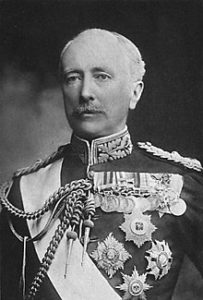
Numbered Treaties were signed in the late 19th century with the chiefs of First Nations that lived in the area. They made specific promises of land for every family. As a result, a reserve system was established under the jurisdiction of the Federal Government. The prescribed amount of land promised to the native peoples was not always given; this led aboriginal groups to assert rights to the land through aboriginal land claims, many of which are still ongoing.
The original province of Manitoba was a square one-eighteenth of its current size, and was known colloquially as the “postage stamp province”. Its borders were expanded in 1881, taking land from the Northwest Territories and the District of Keewatin, but Ontario claimed a large portion of the land; the disputed portion was awarded to Ontario in 1889. Manitoba grew to its current size in 1912, absorbing land from the Northwest Territories to reach 60°N, uniform with the northern reach of its western neighbours Saskatchewan, Alberta and British Columbia.
The Manitoba Schools Question showed the deep divergence of cultural values in the territory. The Catholic Franco-Manitobans had been guaranteed a state-supported separate school system in the original constitution of Manitoba, but a grassroots political movement among English Protestants from 1888 to 1890 demanded the end of French schools. In 1890, the Manitoba legislature passed a law removing funding for French Catholic schools. The French Catholic minority asked the federal government for support; however, the Orange Order and other anti-Catholic forces mobilized nationwide to oppose them.
The federal Conservatives proposed remedial legislation to override Manitoba, but they were blocked by the Liberals, led by Wilfrid Laurier, who opposed the remedial legislation because of his belief in provincial rights. Once elected Prime Minister in 1896, Laurier implemented a compromise stating Catholics in Manitoba could have their own religious instruction for 30 minutes at the end of the day if there were enough students to warrant it, implemented on a school-by-school basis.
Modern Era:
By 1911, Winnipeg was the third largest city in Canada, and remained so until overtaken by Vancouver in the 1920s. A boomtown, it grew quickly around the start of the 20th century, with outside investors and immigrants contributing to its success. The drop in growth in the second half of the decade was a result of the opening of the Panama Canal in 1914, which reduced reliance on transcontinental railways for trade, as well as a decrease in immigration due to the outbreak of the First World War. Over 18,000 Manitoba residents enlisted in the first year of the war; by the end of the war, 14 Manitobans had received the Victoria Cross.
After the First World War ended, severe discontent among farmers (over wheat prices) and union members (over wage rates) resulted in an upsurge of radicalism, coupled with a polarization over the rise of Bolshevism in Russia. The most dramatic result was the Winnipeg general strike of 1919. It began on 15 May and collapsed on 25 June 1919; as the workers gradually returned to their jobs, the Central Strike Committee decided to end the movement.
